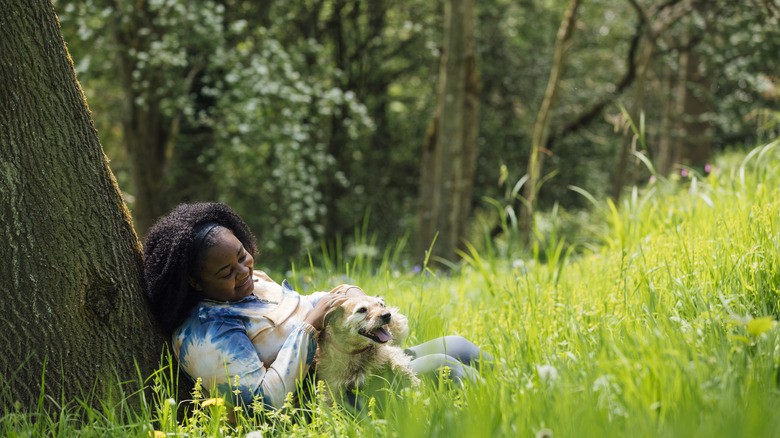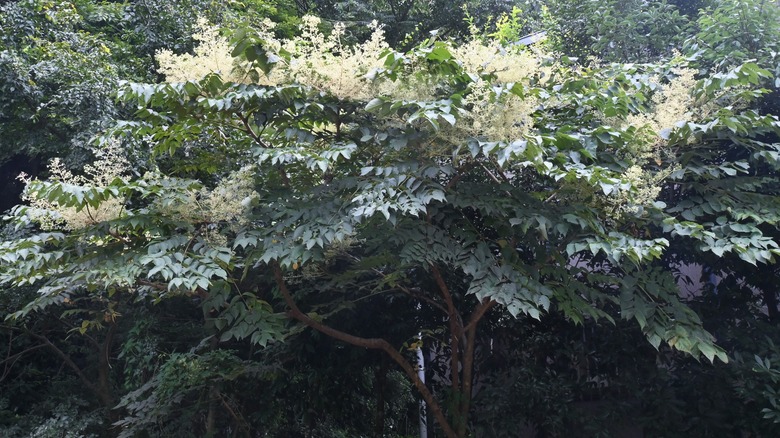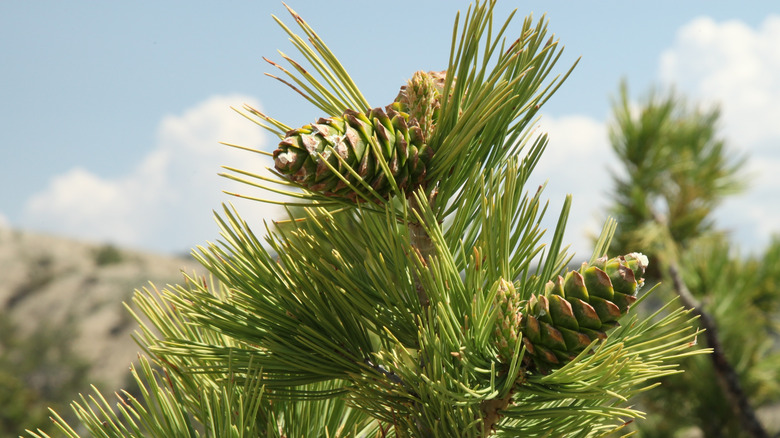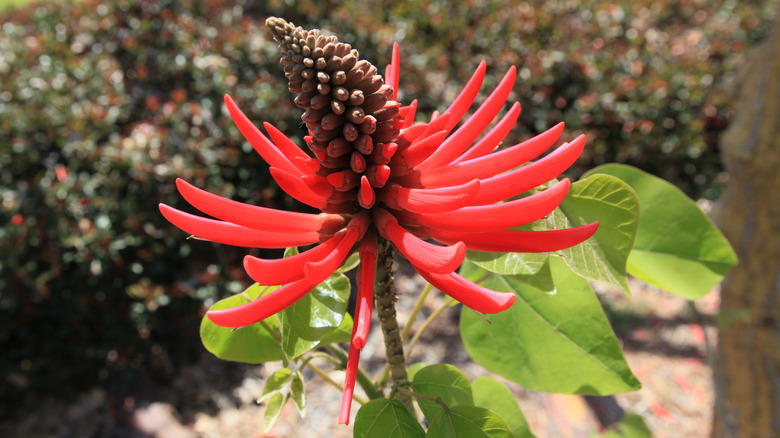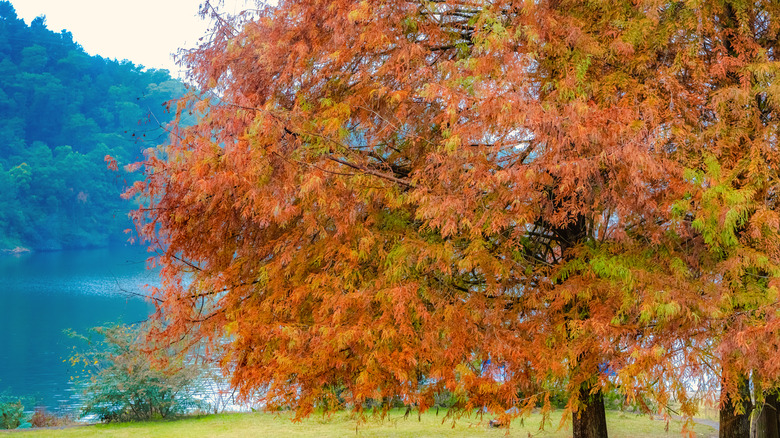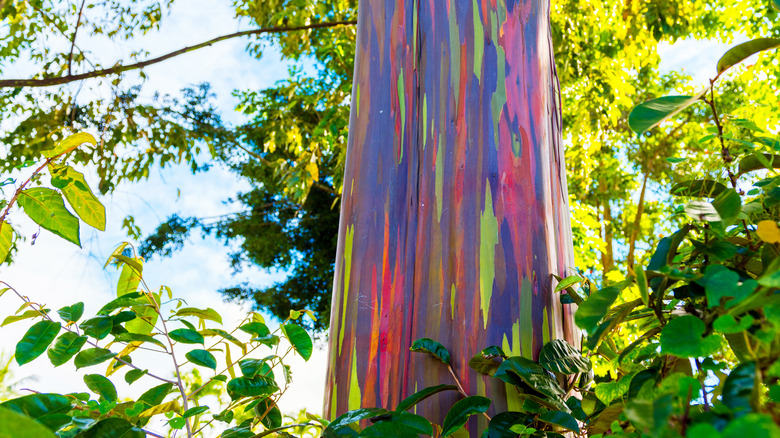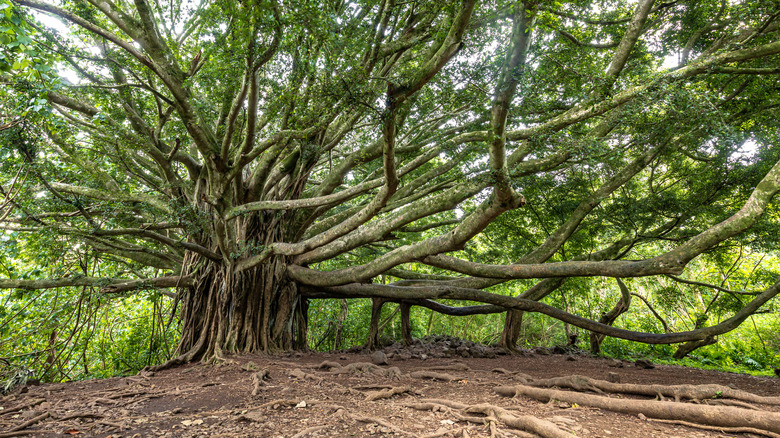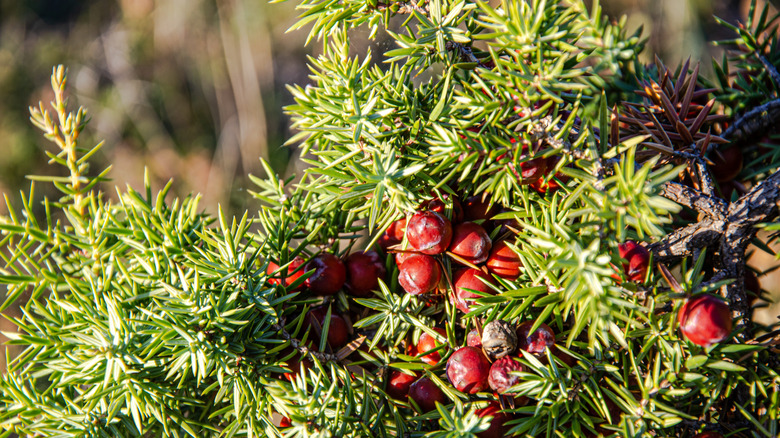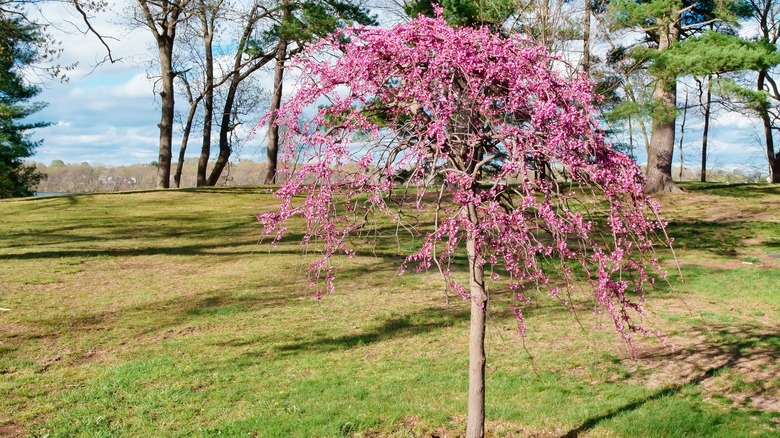The 8 Most Unique Trees Found In The United States (& Which You Can Grow At Home)
You probably walk past many trees every day without noticing them or giving them much thought. But the United States plays host to a few tree species that can make you stop and take notice. Some, like the rainbow eucalyptus, will grab your attention thanks to their unique appearance and vibrant colors. Others, like the Pacific yew, are more remarkable for what they can do. In this case, that's helping people fight cancer. You can even plant some of these trees in your own yard or garden and enjoy them all the time. Others, however, have invasive potential and should not be planted at home.
While in no way inclusive of all the magnificence Mother Nature has to offer, this list will introduce you to some of the most unique trees living in the United States. Some are native while others have come to us from other parts of the world and established themselves here. Either way, there is no denying that each of these trees offers something special.
The devil's walking stick
Growing in the southeastern United States, the devil's walking stick tree (Aralia spinosa) grows juicy fruit that is enjoyed by chipmunks, raccoons, and other animals. Perhaps in an effort to protect itself from these animals, the tree is covered in thorns. Depending on how quickly the tree grows, these thorns either spiral around the trunk or appear in rings. The plant even has thorns on its leaves, so it definitely means business. This plant's thorns make it unique, but so do its leaves, which are the largest compound leaves of any plant that grows in North America. These leaves can be up to 5 feet long and 4 feet wide, with individual leaflets reaching lengths of 3 1/2 inches.
Although it definitely makes sense to keep these thorny trees away from kids, pets, and heavily traveled areas, you can grow them at home and should consider doing so. With their large leaves and creamy white flowers that bloom from mid to late summer, these trees can be attractive ornamentals in the landscape. These generally small trees grow in USDA plant hardiness zones 4 through 9 and reach heights of 10 to 15 feet. Occasionally, however, an individual over-achiever can reach heights of up to 35 feet. But for the most part, these are perfect trees for a small garden.
Limber pine
Native to the western United States and found from the Rocky Mountains down into New Mexico, the limber pine (Pinus flexilis) produces extremely strong lumber. You would think that such solid lumber would come from a very rigid tree, but that's what makes the limber pine so unique. Although its trunk is solid and strong, the branches are incredibly flexible and can bend extremely far without breaking. This adaptation allows the tree to carry heavy snow and ice loads without suffering damaged limbs.
Attractive blue-green needles make this evergreen pop in the landscape, as does its pleasing conical shape. Reaching heights of 30 to 50 feet, this evergreen works well in the home garden but does like to feel the breeze so don't crowd it with dense plantings. Its only other requirement is well-drained soil. Provide that and plenty of sunlight and this pine will thrive throughout USDA hardiness zones 4 through 7. It's definitely a pine tree you should grow in your yard.
Wiliwili tree
The wiliwili tree (Erythrina sandwicensis) is unique because it's deciduous, but it loses its leaves in the spring or summer rather than in the fall. Native to Hawaii, the tree loses its leaves and goes dormant during the hottest part of the year rather than in the winter. This tree also produces a very light wood, which Hawaiians have used in the past to make canoes and surfboards. The tree's flowers have also been used to cure venereal diseases. Wiliwili trees were almost wiped out by gall wasps who came to the islands in 2005, but officials were able to save the trees by releasing a parasitic wasp that kills gall wasps.
If you're fortunate enough to live in the warmth of USDA hardiness zones 10 through 12, you can grow wiliwili trees at home. This drought-resistant plant is perfect for saving water and only gets about 40 feet tall. The tree produces beautiful flowers in reds, oranges, whites, and yellows in the spring and early summer before they go dormant and are sure to brighten up the landscape.
Common bald cypress
Like many pines and evergreens, the common bald cypress (Taxodium distichum) produces pine cones and is covered in needles rather than leaves. What makes it unique, however, is that it is actually a deciduous tree. Its needles turn a beautiful reddish color in the fall and then drop off the tree. The bald cypress is also known for growing large bumpy roots known as knees when it grows in swampy areas. Scientists theorize that these knees help the tree get enough air when its roots are submerged.
People often think about the trees growing in the swamps of the Louisiana Bayou when the bald cypress tree comes to mind, but these trees can grow almost anywhere. They don't mind wet feet but do just fine in dry soil as well. And this long-lasting tree will thrive in a damp yard. This adaptable species grows in USDA hardiness zones 4 through 11 and is well worth planting at home for its stunning fall color. These trees can easily reach heights of 50 to 70 feet, however, so make sure your tree will have plenty of headroom.
Rainbow eucalyptus
Although not native to the United States, you can find rainbow eucalyptus trees (Eucalyptus deglupta) growing here in USDA hardiness zones 9 through 11. Absolutely stunning, this tree features bark that peels off the tree to reveal streaks of red, blue, green, and yellow underneath. This beautiful reveal happens every summer, creating a new color palette each time. These unique evergreens also grow remarkably fast, adding up to 5 feet to their height in a single year.
This eucalyptus tree will add drama to your yard. Unfortunately, as tempting as it may be to grow this tree at home, it is considered invasive in parts of the United States, If you wish to add this beauty to your yard or garden, check with your local cooperative extension first to make sure doing so isn't illegal. You can be asked to cut down and destroy invasive species growing on your property, and this particular tree is on the expensive side. Protect yourself and the environment by checking before planting.
Banyan tree
This Indian native was brought to Hawaii by Asian migrant workers who came to work the sugar fields. Banyan trees (Ficus benghalensis) are a spectacular sight. The trees grow supersized canopies that are so large the tree grows roots down from the limbs to provide extra support. These take hold when they touch the ground, helping to support the top-heavy tree's weight. These aerial roots can make a single tree look like an entire forest.
Banyan trees will grow in USDA hardiness zones 10 through 12, but planting them outdoors isn't a good idea. For one, the trees are considered invasive in many areas. Secondly, these trees reach about 100 feet in height but can spread across literal acres of land, which will probably not sit well with your neighbors. They also tend to damage any structures like sidewalks and sewer pipes. If you really want to grow one, consider doing so indoors. A close relative, ficus microcarpa, does quite well when grown as a bonsai tree. This tree may be just what you're looking for if you want to learn how to grow and care for a bonsai tree.
Pacific yew
The Pacific yew (Taxus brevifolia) isn't unique because of how it looks but for what it can do. If you find an older yew it will look different, with shredding bark that reveals a red trunk underneath. Female trees also produce red berries rather than cones like most other conifers. But this tree's most unique trick is its ability to be quite dangerous while simultaneously saving lives. Every single part of the Pacific yew is poisonous, in many cases proving potentially lethal to both humans and livestock. Ironically, however, the tree's bark is used to make a cancer-fighting drug called taxol.
The Pacific yew is often a small, shrub-like tree that grows only about 6 feet high, but it can reach heights of 45 to 60 feet. It is evergreen and the bright red berries do add some interest, but there isn't anything particularly attractive about growing the plant in the landscape. There are, however, still reasons why you should plant a yew tree in your backyard, and you can do so in USDA hardiness zones 4 through 9. Given its poisonous nature, however, it's best to grow it well away from children, pets, and livestock.
Lavender Twist Redbud
Imagine a lavender plant crossed with a weeping willow and you'll have an idea what the lavender twist redbud tree (Cercis canadensis 'Covey') looks like. First discovered in New York, this fascinating tree erupts in lavender colored flowers early in the spring, These flowers adorn bare branches that sweep towards the ground much like a weeping willow tree. As the flowers fade, they are replaced by beautiful heart-shaped leaves.You won't find another tree like it in the landscape.
This gorgeous tree is a great addition to any backyard garden. Viable in USDA hardiness zones 5 through 9, it will grow almost anywhere in the United States. It's also a petite tree that only gets about 6 feet tall and up to 8 feet wide, so it will fit almost anywhere you want to tuck it. It will also attract bees, hummingbirds, and butterflies while resisting damage from deer.
